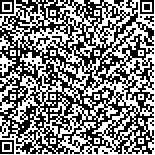| 引用本文: |
武姿含,蒋素容,陈芯仪,高音来,肖山峰,田浩梅,陈楚淘.针刺大椎、百会、人中穴对大鼠脑缺血再灌注损伤后ES蛋白表达的影响[J].湖南中医药大学学报,2019,39(4):507-510[点击复制] |
|
| |
|
|
| 本文已被:浏览 2291次 下载 592次 |
| 针刺大椎、百会、人中穴对大鼠脑缺血再灌注损伤后ES蛋白表达的影响 |
| 武姿含,蒋素容,陈芯仪,高音来,肖山峰,田浩梅,陈楚淘 |
| (湖南中医药大学针灸推拿学院, 湖南 长沙 410208) |
| 摘要: |
| 目的 探讨针刺大椎、百会、人中穴对内皮抑素(Endostatin,ES)作用于大鼠脑缺血再灌注损伤后的表达变化及影响,研究ES作用于脑保护的部分机制。方法 将50只SD大鼠随机分为正常组、假手术组各10只,其余30只大鼠参照ZeaLonga线拴法制作大脑中动脉缺血模型,造模成功后再随机分为模型组、依达拉奉组、针刺组,10只/组。正常组、假手术组、模型组仅捆绑,依达拉奉组以3 mg/kg (稀释至1 mL)腹腔注射,针刺组行大椎、人中、百会穴针刺,每12 h行1次治疗,6次后行神经功能缺损评分,再行Western Blot法检测ES表达。结果 (1)神经功能缺损评分对比:治疗后,与正常组、假手术组比较,其余3组评分较高(P<0.01);与模型组比较,依达拉奉组及针刺组评分下降,差异均有统计学意义(P<0.01);治疗前后依达拉奉组及针刺组组内比较,差异有统计学意义(P<0.01)。(2) ES比较:治疗后与正常组及假手术组比较,其余3组差异均有统计学意义(P<0.01);与模型组比较,依达拉奉组及针刺组差异均有统计学意义(P<0.01)。结论 大鼠脑缺血再灌注损伤后,针刺能使神经功能缺损评分下降,并能在一定程度上减少缺血区域海马组织ES的表达,达到减轻脑缺血再灌注损伤的作用机制,促进脑组织的修复。 |
| 关键词: 脑缺血再灌注 针刺 大椎穴 百会穴 人中穴 内皮抑素 |
| DOI:10.3969/j.issn.1674-070X.2019.04.015 |
| 投稿时间:2018-11-26 |
| 基金项目:国家自然科学基金项目(81303051,81874508);大学生创新创业训练计划(2017-8397) |
|
| Effects of Acupuncture Dazhui (DU14),Baihui (GV20),Renzhong (GV26) on ES Protein Expression after Cerebral Ischemia Reperfusion Injury in Rats |
| WU Zihan,JIANG Surong,CHEN Xinyi,GAO Yinlai,XIAO Shanfeng,TIAN Haomei,CHEN Chutao |
| (College of Acupuncture, Moxbustion and Massage, Hunan University of Chinese Medicine, Changsha, Hunan 410208, China) |
| Abstract: |
| Objective To investigate the changes and effects of acupuncture Dazhui (DU14), Baihui (GV20), Renzhong (GV26) on the expression of Endostatin (ES) after cerebral ischemia reperfusion injury in rats and the mechanism of ES on brain protection. Methods A total of 50 SD rats were randomly divided into the normal group and the sham operation group, with 10 rats in each group. The other 30 rats were used to establish cerebral ischemia model according to the ZeaLonga method. After successful modeling, they were divided into the model group, the edaravone group, and the acupuncture group, with 10 rats in each group. The normal group, the sham operation group and the model group were only bundled. The edaravone group was injected with 3mg/kg (diluted to 1 mL) by intraperitoneal injection. In the acupuncture group, acupuncture at Dazhui (DU14), Baihui (GV20), Renzhong (GV26) was performed for 1 time in every 12 h, and neurological function defect score was performed after 6 times, and then the expression of ES was detected by Western Blot. Results (1) Comparison of neurological defects scores between groups:After treatment, compared with the normal group, and the sham operation group, the scores of other 3 groups were higher. Compared with the model group, the scores of the edaravone group and the acupuncture group decreased. The differences were statistically significant (P<0.01). Comparing among the groups before and after the treatment, the differences were statistically significant (P<0.01). (2) Comparison of ES:After treatment, compared with the normal group and the sham operation group, the differences among the other 3 groups were statistically significant (P<0.01). Compared with the model group, the difference between the edaravone group and the acupuncture group was statistically significant (P<0.05). Conclusion After cerebral ischemia reperfusion injury in rats, acupuncture can reduce the score of nerve function defect and reduce the expression of ES in the hippocampus tissue in the ischemia area to a certain extent, so as to reduce the mechanism of cerebral ischemia reperfusion injury and promote the repair of brain tissue. |
| Key words: cerebral ischemia reperfusion acupuncture Dazhui (DU14) Baihui (GV20) Renzhong (GV26) endothelial inhibition |
|

二维码(扫一下试试看!) |
|
|
|
|




